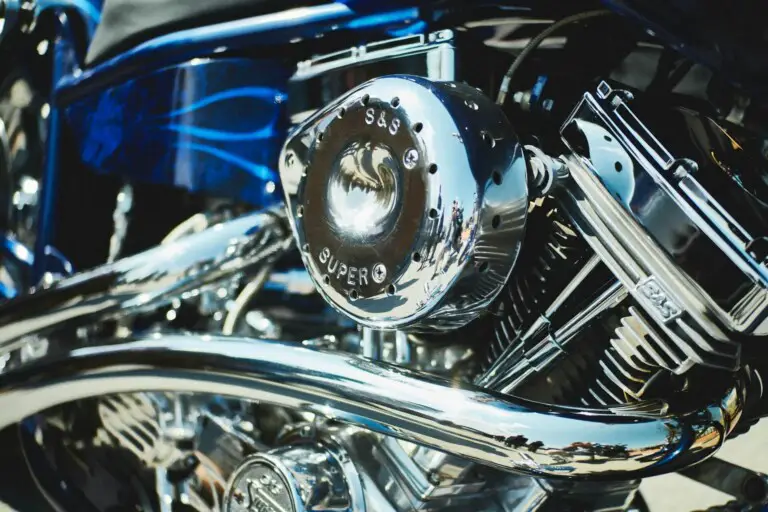If you’ve been wondering about the best frequency for changing your Harley-Davidson’s oil, here’s an eye-opening fact: while the manufacturer suggests intervals between 3,000 to 5,000 miles, many riders opt for a more frequent oil change every 2,500 miles. But why do some riders swear by this shorter interval? Stay tuned to uncover the reasoning behind this choice and how it could benefit your beloved Harley in the long run.
Change the oil every 5,000 miles, or more frequently under extreme riding conditions, such as high heat or dusty environments.
Key Takeaways
- Follow manufacturer’s recommendation: 3-5k miles for peak performance.
- Opt for proactive approach: change oil every 2,500 miles for engine health.
- Consider synthetic oil: superior protection and extended intervals.
- Prioritize preventive maintenance: crucial for engine longevity.
- Focus on primary and transmission oil changes for smooth operation.
Manufacturer’s Recommendation: 3-5k Miles
For peak engine performance, Harley-Davidson recommends changing your motorcycle’s engine oil every 3,000 to 5,000 miles. Following this guideline is essential to maintain the best functioning of your Harley-Davidson.
Regular oil changes aren’t just a routine maintenance task; they’re necessary in preventing engine wear, reducing friction, and averting overheating issues. By adhering to the 3-5k mile interval as suggested by the manufacturer, you guarantee that the internal engine components receive proper lubrication, leading to improved longevity and performance of your beloved Harley-Davidson motorcycle.
Harley-Davidson engines are finely tuned machines, and consistent oil changes based on mileage play a significant role in extending the lifespan of your bike. Over time, oil breaks down and loses its effectiveness, making timely changes crucial for the health of your engine.
Owner’s Preference: Every 2500 Miles
Harley-Davidson enthusiasts who prioritize excellent engine health often choose to change their motorcycle’s oil every 2,500 miles. This oil change interval is a popular choice among riders seeking to maintain their engine’s peak performance and longevity.
Opting for a 2,500-mile oil change aligns with a proactive maintenance approach favored by many experienced owners. By sticking to this interval, riders can safeguard against potential engine issues and guarantee smooth operation of their Harley-Davidson.
Consistent oil changes at 2,500 miles are crucial for sustaining reliable motorcycle performance over time. Choosing to change the oil more frequently than the manufacturer’s recommendation can provide added peace of mind regarding the engine’s well-being and contribute to a liberating riding experience.
For owners who value the health and efficiency of their Harley-Davidson’s engine, the 2,500-mile oil change interval is a practical and rewarding choice.
Benefits of Synthetic Oil

Using synthetic oil in your motorcycle can provide superior engine protection and performance compared to conventional oil. Synthetic oil offers better lubrication and can endure higher temperatures, making it an excellent choice for Harley-Davidson motorcycles. One of the key advantages of synthetic oil is its extended lifespan, allowing for longer intervals between oil changes. This not only saves you time and effort but also contributes to improved fuel efficiency and reduced engine wear over time. Many Harley-Davidson enthusiasts opt for synthetic oil due to its overall benefits on engine health and performance.
| Benefits of Synthetic Oil | |
|---|---|
| Better engine protection | Superior performance compared to conventional oil |
| Withstands high temperatures | Extended oil change intervals |
| Improved fuel efficiency | Reduced engine wear over time |
Importance of Preventive Maintenance
Regularly scheduled maintenance plays a critical role in guaranteeing peak performance and longevity of your motorcycle’s engine. One of the key aspects of preventive maintenance is the regular oil change. By changing your oil at recommended intervals, you not only secure proper lubrication but also prevent moisture buildup, which can lead to corrosion and engine damage. Additionally, analyzing the used oil can offer valuable insights into your engine’s condition, helping you detect any potential issues early on.
To maintain top-notch engine health, it’s essential to not only focus on the engine oil but also regularly change the primary and transmission oil. This helps ensure smooth operation and longevity of these critical components.
Lab testing is considered the most accurate way to assess the condition of the oil, providing you with precise information to make informed maintenance decisions and keep your Harley-Davidson performing at its best.
Primary and Transmission Oil Changes

When maintaining your motorcycle’s engine health, don’t overlook the importance of regular primary and transmission oil changes to prevent mechanical issues and sustain peak performance.
The primary chain must undergo examination, adjustment, lubrication, and cleaning to ensure maximum functionality.
For the transmission, replacing the lubricant at regular intervals, typically every 15,000 to 20,000 miles, is vital for smooth gear shifts and overall performance.
Additionally, maintaining proper clutch and throttle adjustment, along with lubrication, is essential to guarantee seamless operation of these components.
Furthermore, it’s imperative to conduct rear-drive belt inspections and adjustments regularly to avoid wear and tear that could lead to costly repairs.
By adhering to a strict schedule of changing the primary and transmission oils, you not only extend the lifespan of your Harley-Davidson but also uphold its efficiency on the road.
Conclusion
So, don’t delay – make sure you’re changing your Harley-Davidson’s oil regularly to keep it running smoothly and efficiently.
Just like giving your bike the right fuel to keep it going strong, regular oil changes are the key to maintaining its performance and longevity.
Stay ahead of the game and schedule those oil changes like clockwork to guarantee your Harley is always ready to hit the road.

